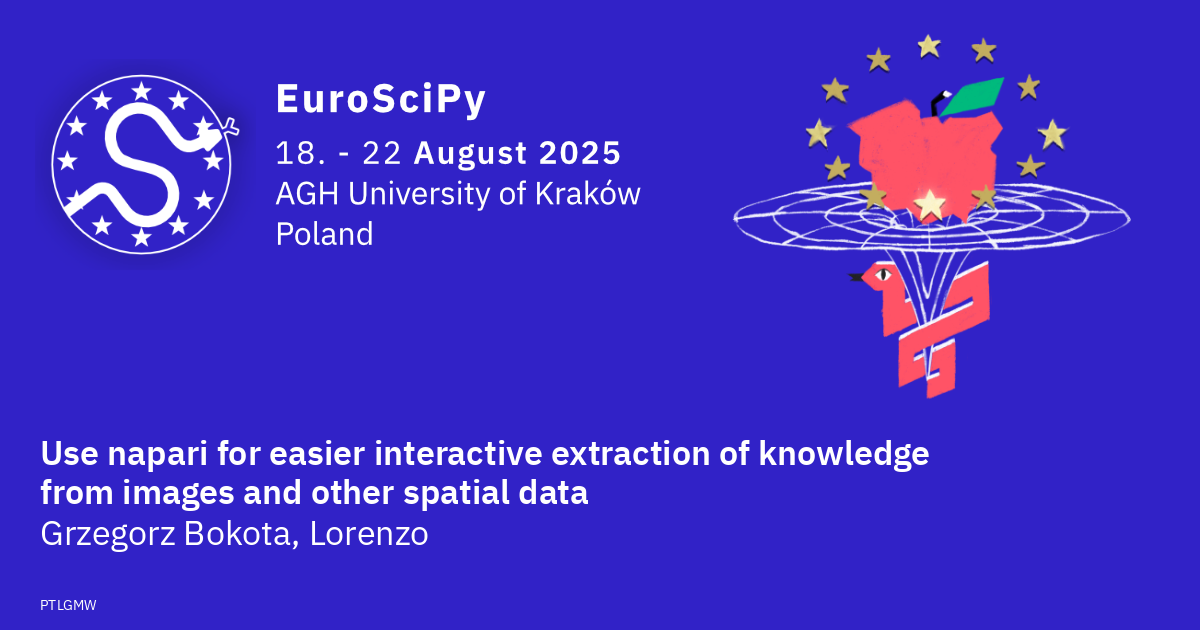Use napari for easier interactive extraction of knowledge from images and other spatial data
Grzegorz Bokota, Lorenzo
As we collect more and more images and other spatial information, we need to improve tooling to be able to process all the data that we gather from microscopes, telescopes, satellites, MRI machines and a myriad of other sensors. For the phase of data exploration, we need a tool that allows smooth comparison of results from various knowledge extraction methods, in order to choose the best method of processing our data.
This tutorial is aimed at people who have some experience in scientific computing with Python. To get the most out of it, you should be familiar with NumPy arrays, Jupyter notebooks, and Python scripts. Ideally, you should have some idea of how images can be represented as arrays of numbers, and the types of analyses that might be performed on these arrays, e.g. filtering and segmentation. You don’t necessarily need to be familiar with how these tools and methods work - it’s enough to know that they are out there!
This tutorial will be split into three parts:
Part 1: Introduction: using napari, exploring the interface, using sample plugins to perform basic data manipulation In this section, we will introduce participants to the napari interface and show how to perform basic operations. It will also ensure that participants have properly created the virtual environment. Part 2: Extending napari with custom functionalities: custom widgets and mouse callbacks, from a Python script or Jupyter notebook. In this section, we will teach: How to allow trigger custom functions from napari GUI. How to create a simple widget from a function and how to prepare a more complex widget to fit better into workflow. How to integrate the napari viewer with an interactive session in jupyter. Part 3: How to convert your custom extension of napari into a plugin, Python package, that can be easily shared with other people. In this section, we will show how to pack custom widgets into plugins and share them as Python packages.
Installation instruction
In this tutorial we assume usage of uv for environment management.
If you prefer to use conda or pip, then you may use our installation instruction
To setup your workspace:
- Install
uv(here instruction https://docs.astral.sh/uv/#installation) - Clone (
git clone https://github.com/brisvag/napari-tutorial-euroscipy2025.git) or download the repository - Go into the project directory
- Execute
uv sync - Check if everything works by executing
uv run napari. If the application starts your environment is ready!
You may activate the environment by typing
- [Linux/MacOs]
source .venv/bin/activate - [Windows]
venv\Scripts\activate.bat(orvenv\Scripts\Activate.ps1if using PowerShell)
